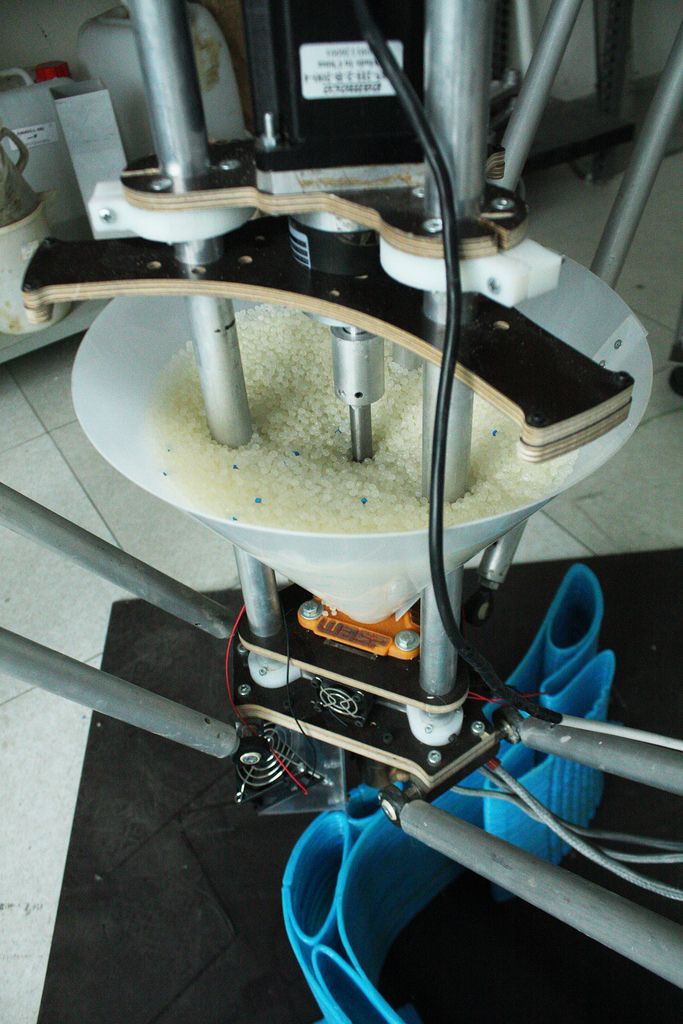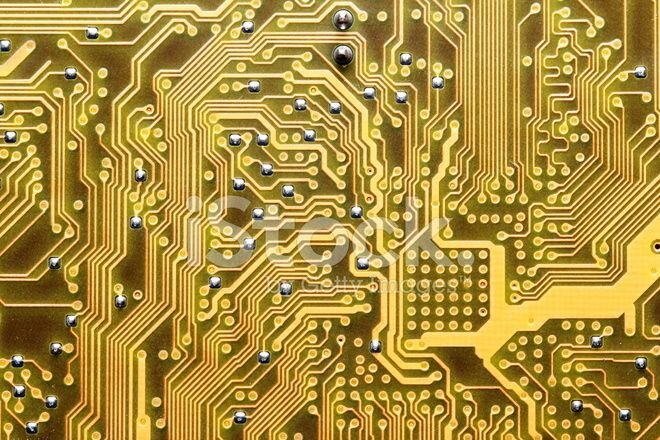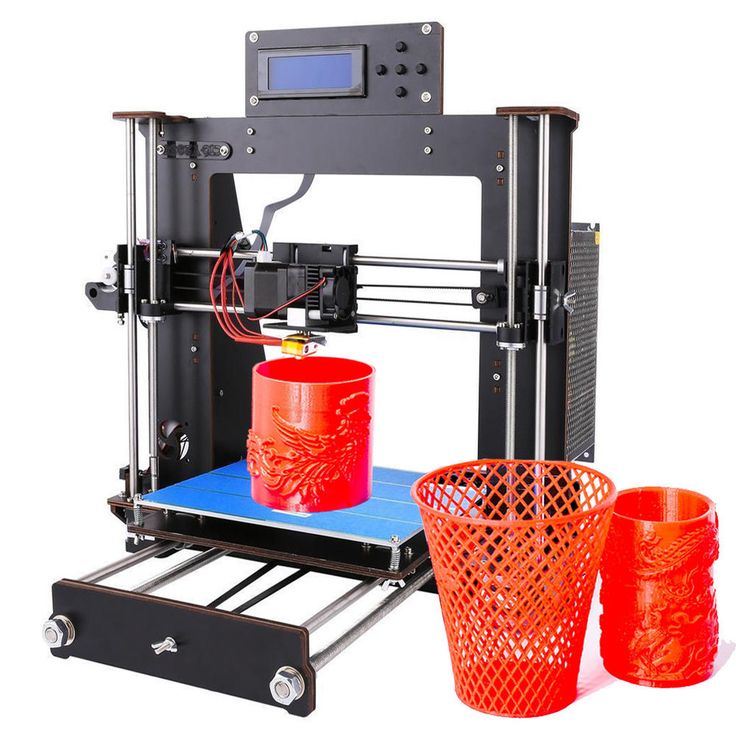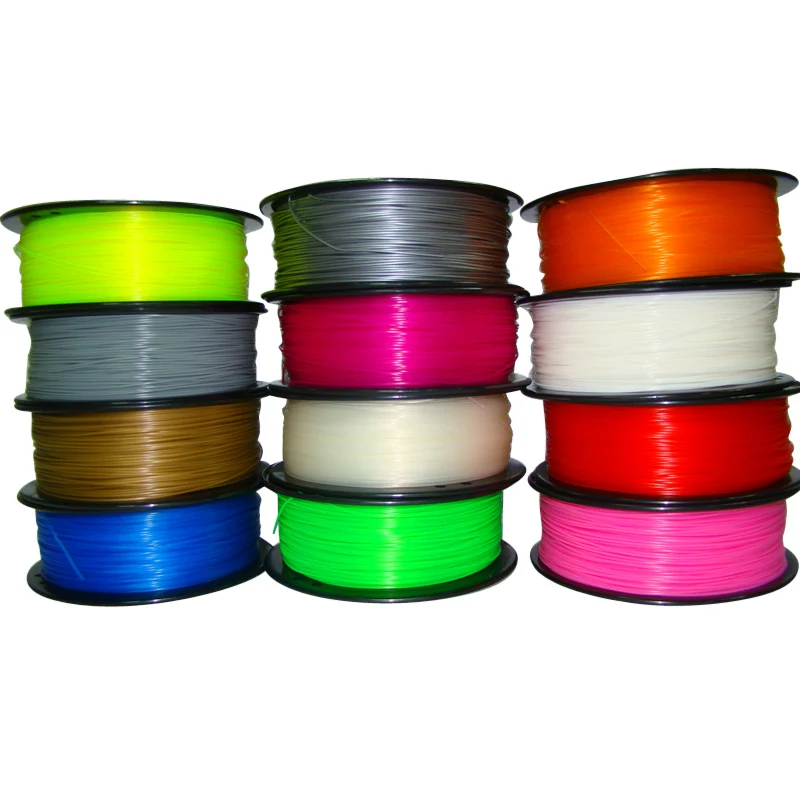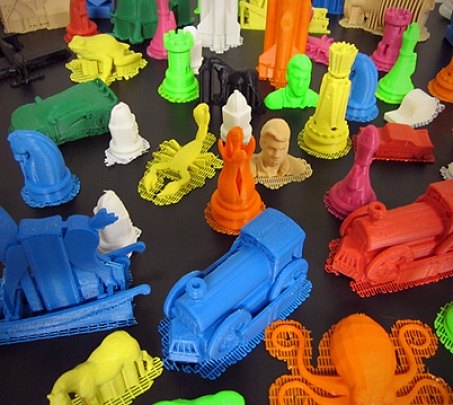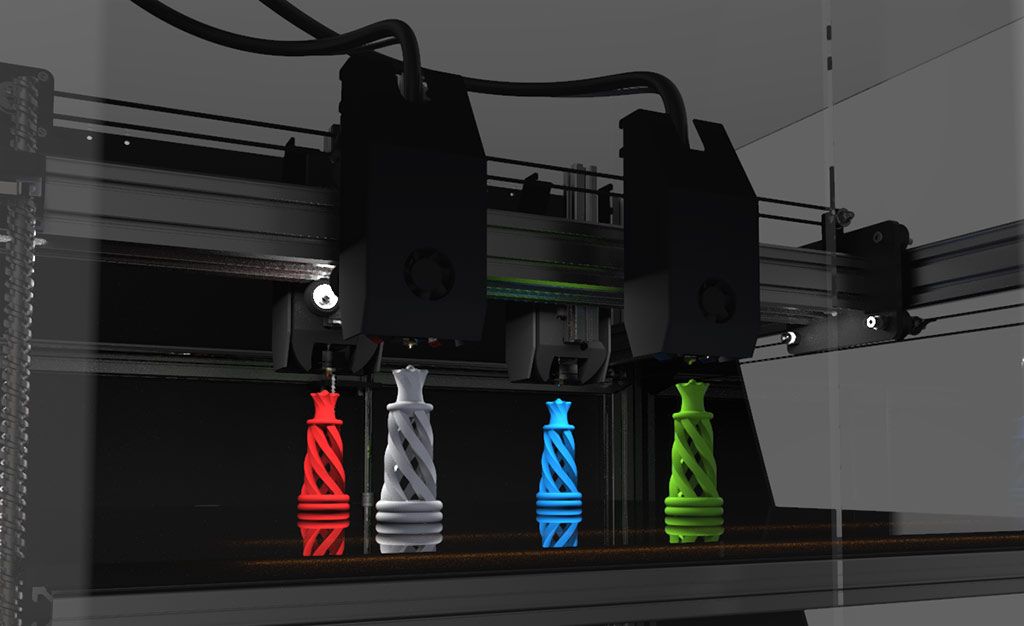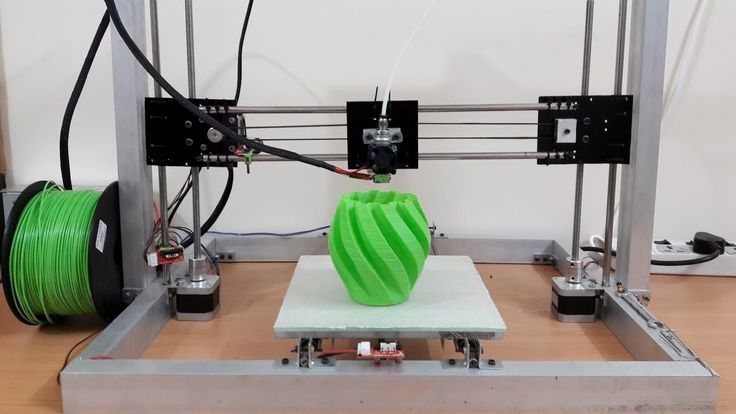3D printer pellets
Guide to pellet additive manufacturing (3D printing pellets)
What is pellet 3D printing?
Pellet additive manufacturing or pellet 3D printing, sometimes known as fused granulate fabrication (FGF), is a variant of fused deposition modeling (FDM, or FFF for fused filament fabrication) that uses pellets as feedstock instead of filament.
Although filament is suitable for most 3D printing applications, pellet 3D printing has carved out a niche in prototyping and large-format printing, where it can offer important advantages such as lower costs and faster builds.
To use pellets as feedstock, however, one needs a special type of extruder different from the kind found on an FDM printer.
How pellet additive manufacturing works
The pellet extrusion process
Pellet 3D printing borrows aspects from both FDM and plastic forming processes like injection molding. Like FDM, it builds up parts layer by layer by extruding molten material from a nozzle attached to a computer-controlled printhead.
Where it differs from FDM, and where it more closely resembles injection molding, is the way it feeds raw material to the nozzle, which it does via a screw and barrel system. In this system, pellets are gravity-fed from a hopper into a heated barrel, where they are melted down and forced towards a nozzle by a reciprocating screw (or auger).
An illustration of how Pollen AM‘s PAM (pellet additive manufacturing) technology works. Source: Pollen AMCompared to FDM, pellet additive manufacturing offers fast speeds and large nozzle diameters, but falls short in terms of accuracy and resolution.
Pellet feedstock
Mass-produced thermoplastic pellets, which may also be called nurdles or granules, typically come in a spherical or cylindrical shape and have a diameter of a few millimeters.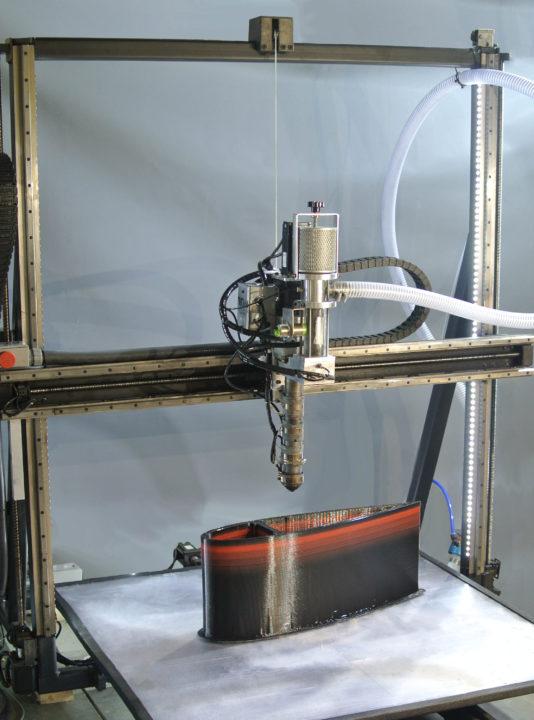
Many plastics (as well as metals and composites) are manufactured in pellet form, and pellets are typically 60–90 percent cheaper than an equivalent 3D printer filament. Because pellets are required for other plastic manufacturing processes like injection molding and plastic extrusion, they are both ubiquitous and affordable.
Advantages of pellet 3D printing
The benefits of pellet 3D printing include large-format 3D printing and low material costs compared to FDM.
Material cost
Pellets are easy and economical to manufacture in huge volumes and consequently have a low retail price. Filament is more expensive because it takes longer to produce (it is usually extruded from pellets) and provides a high level of convenience for FDM users.
Range of materials
A wide variety of plastics is available in pellet form, including many recycled plastics, and some materials are easier to make into pellets than filament due to their chemical composition.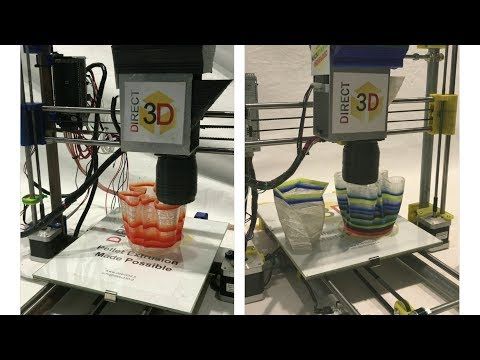
Qualified materials
Pellet feedstock is widely used in conventional manufacturing processes such as plastic injection molding. Hence, manufacturers who are already using pellets– and in materials that they have qualified for their own applications– can use the exact same materials with their pellet additive manufacturing systems.
Large-format printing
Pellets can be fed into a hopper continuously without interrupting the print, which is useful for printing large objects. Conversely, if a large-format print requires more than one spool of filament, the filament must be switched mid-print, which can lead to imperfections.
Fast printing
Pellet extrusion with its barrel and screw system enables fast flow rates and deposition rates. Nozzles can also have wider diameters, which allows more material to be extruded in a shorter space of time. Pellet 3D printer manufacturer Juggerbot3D estimates that pellet extruders could have a maximum throughput up to 80 times greater than filament extruders.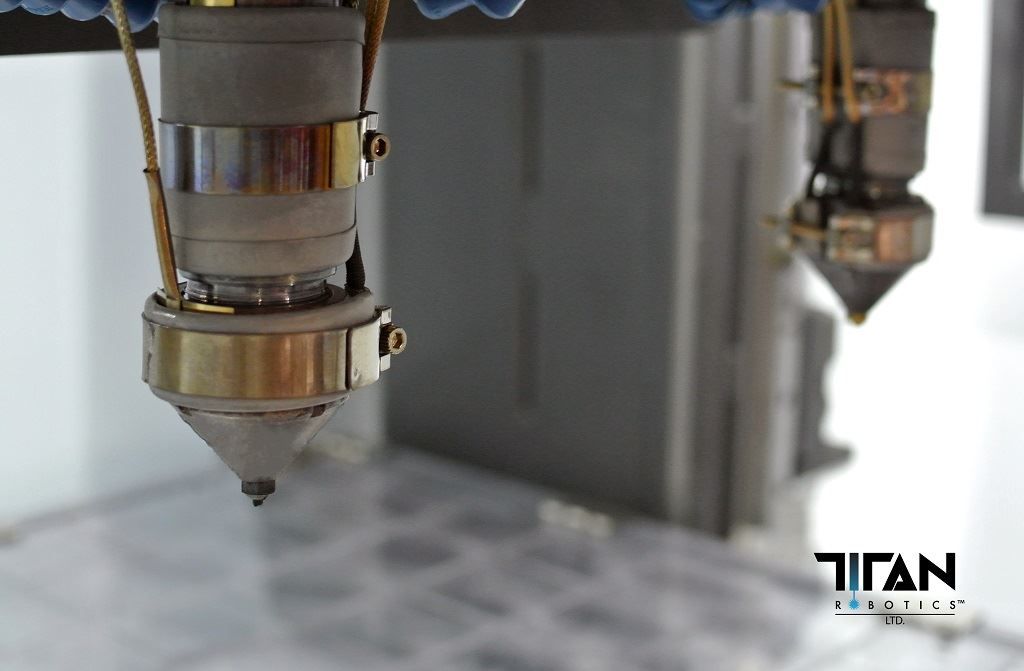
Limitations of pellet 3D printing
3D printing filament is costly for a reason: it allows for a level of control and precision beyond the capabilities of pellets.
Resolution and complexity
Pellet 3D printing cannot achieve resolutions comparable to FDM. For a typical machine, the smallest layer height achievable in pellet printing is about 1 mm (1000 microns). Part complexity is limited, and overhangs are not possible.
Flow control
Melting and extruding plastic with a reciprocating screw is great for pumping out large volumes of material, but it offers a lower level of control than a stepper-motor filament extruder. For instance, it is impossible to retract the extruded material, which can lead to oozing.
Machine size
Pellet extrusion systems can be heavy and occupy a large footprint, making them less convenient than some FDM printers.
Overview of available pellet AM technologies
Pellet 3D printing requires either a dedicated pellet 3D printer or a pellet extruder that can be fitted to an existing machine.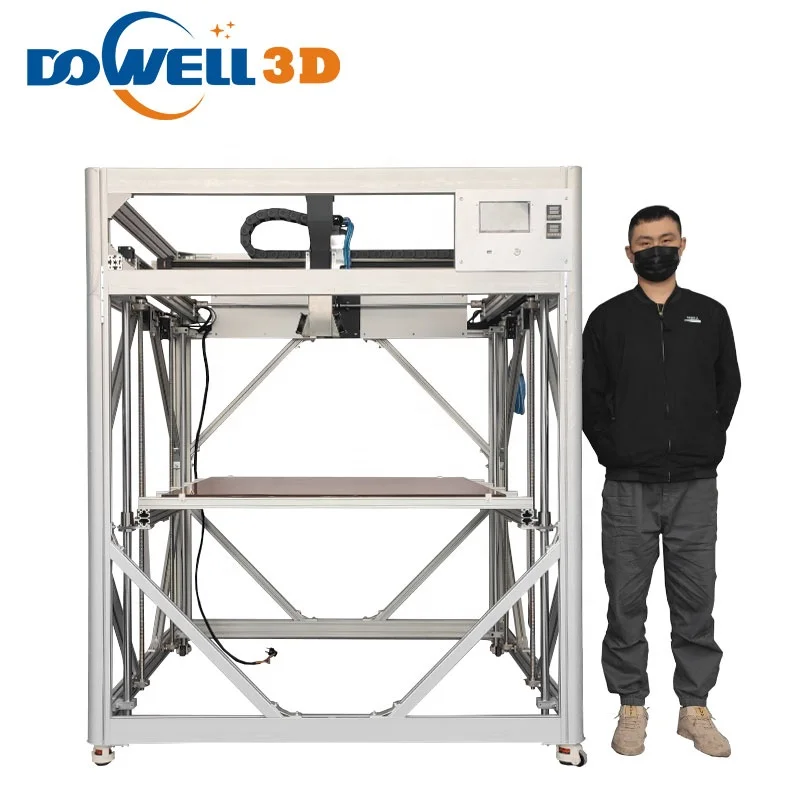
Some pellet 3D printers offer a large build volume suitable for applications like architectural printing or furniture production, while others are comparable to standard FDM machines. Examples of pellet printers include the large-format Cincinnati Incorporated MAAM ($155,000+), the medium-format AIM3D EXAM 510, and the compact Pollen AM Pam Series P ($65,000+).
An alternative strategy is to purchase a pellet extruder that can be fitted to a standard open-source 3D printer like a RepRap. One such extruder is the Pulsar from Dyze Design ($9,000).
A pellet extruder from French manufacturer TOBECA. Source: AniwaaIt is also possible to buy a standalone filament extruder that melts pellets and turns them into filament for use with an FDM printer. Brands include Filabot (high-end, $2,700+) and Filastruder (kit, $300). Extruding filament from pellets is time-consuming but allows one to take advantage of pellet prices while retaining the printing characteristics of FDM.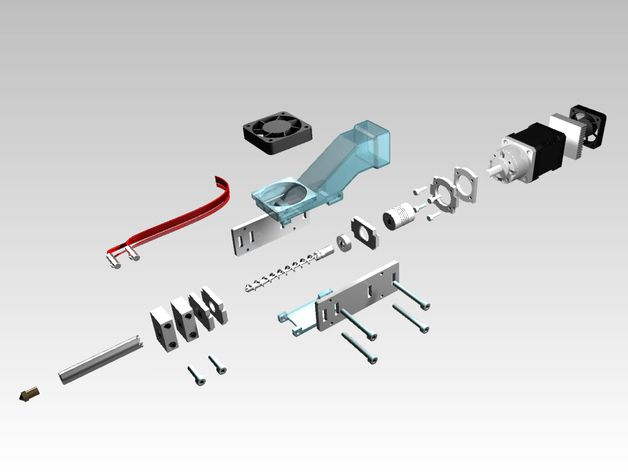
Who is pellet 3D printing for?
3D printer users who find themselves limited by the throughput, build envelope, or material cost of FDM may find that pellet 3D printing is a better option for them — just as long as they are willing to sacrifice resolution and part complexity.
Manufacturers that already use pellets with their other production machines can also benefit from adding a pellet 3D printer to their arsenal, as they can use the same, qualified materials across different systems.
Pellet 3D printers are available at a wide range of price points, with solutions for casual, professional, and industrial users.
Desktop Pellet 3D Printer Brings Industrial Printing to the Masses
Granule / pellet printing is the way forward, as most of you will probably agree.
Also known as Fused Granular Fabrication (FGF), it is already the standard for industrial printing and for large format printing for a variety of reasons, cost being one such reason, which we will discuss later.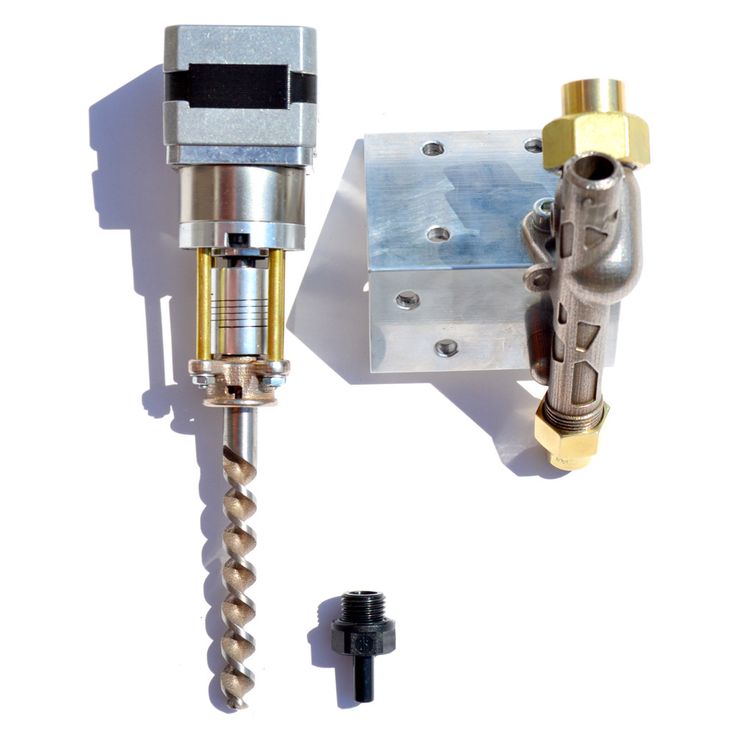
However, it has not really reached the hobbyist / prosumer level yet, largely due to the cost of the granule extruder system. Currently, a decent granule extruder / hotend is going to cost around $10,000 just for the hotend. If you want the motion system and structure, it’s going to cost you extra.
What we really need is a mass produced all-in-one solution to drive down the barrier to entry.
Piocreat 3D G5 – Cost Effective Pellet Printing
Shenzhen-based Piocreat 3D is attempting to do just that. They are hoping to bring granular thermoplastic printing to the masses with their G5 printer, which includes the structure, control system, electronics, hotend/extruder and a hopper.
You can see the Piocreat 3D G5 in the image below.
Piocreat 3D G5. Pellets for the masses (Image credit: Piocreat 3D)The Piocreat 3D G5 features a build volume of an impressive 500mm x 500mm x 500mm, dual Z-axis lead screws with dual tie rods and a rapidly heating bed capable of hitting 60°C in just over 2 minutes, which is not bad for a print bed of that size.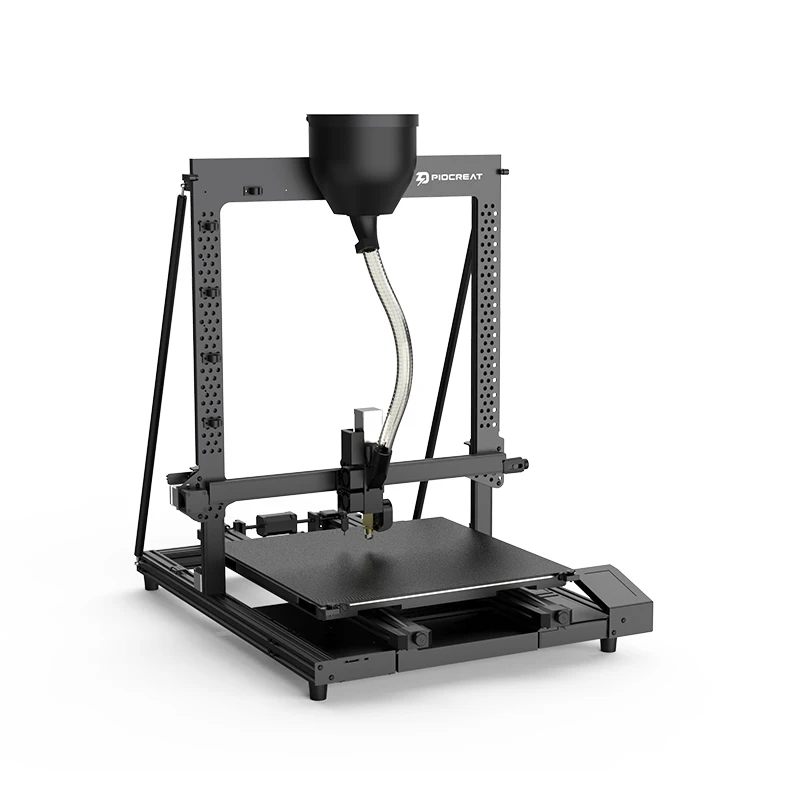 The printer bed can reach a maximum of 150°C, which helps in reducing warpage on high temperature engineering plastics.
The printer bed can reach a maximum of 150°C, which helps in reducing warpage on high temperature engineering plastics.
The granules are fed from the hopper into the screw-type extruder system where it is extruded via nozzles from 0.8mm up to 2mm in diameter, which when combined with over 100mm/s print speed allows for deposition rates of up to 200 grams per hour. The G5 is capable of printing at layer heights of 0.2 up to 1mm.
Screw extruder, for the granules. (Image credit: Piocreat 3D)You can use a variety of pellets in the G5 including PLA, ABS, polycarbonate, HDPE and more. Just remember, this printer is not enclosed, so you may wish to erect an enclosure of your own when dealing with certain warp-prone plastics.
Why Use FGF?
Your common FDM filament starts as a granulate before it is fed into the extruders and cooling systems to take its final form as filament feedstock. Then it must be wound onto a reel and stored in bulk, which takes up warehouse space.
And that’s not to mention the waste generated from the plastic spools themselves. With granules, you don’t pay for the storage space, or the economical cost of manufacturing, transporting and disposing of empty spools. Granules are simply better for the environment compared to filaments.
All of these additional manufacturing steps and storage/transportation stages add cost to filament production, and that not insignificant cost is passed on to the customer.
You can buy thermoplastic granules for 10x less cost than the equivalent filament in many cases, so the question remains, why even bother with filament in the first place?
Why indeed. It’s time to move away from filament, and the G5 seems to be a good way to do this for those looking for a low barrier to entry into granule printing.
The Piocreat 3D G5 is on sale now retailing for $3999 USD, therefore making industrial pellet printing accessible to SMEs, small workshops, universities and serious hobbyists alike.
For more information on the G5 FGF printer, you can head on over to the Piocreat 3D website at this link.
Available on Piocreat3d.com
3D printing with granular plastic.
Baleks
Loading
09/05/2019
8369
Personal diaries
PICASO 3D Designer
ABS plastic is a synthetic polymer synthesized from three components: acrylonitrile, butadiene rubber and styrene. Hence the acronym ABS. The full name is acrylonitrile butadiene styrene
In its standard form, FDM 3D printing filament is in the form of a thin filament, however, some 3D printer manufacturers are looking for other ways to feed material into the device. One of the alternatives is to use polymer granules instead of a thread, which is much more profitable than the traditional method. So, Titan Robotics has developed a special system that allows you to print on a 3D printer with granular plastic. She claims that with this design, printing speeds are tripled and the savings are 90%. It's easy to believe, because the price for 1 kg of plastic thread can reach $30, while for granular plastic you will have to pay only $2. The realization that such an advantage simply cannot be ignored prompted the development team to adapt modern FDM 3D printers for printing with polymer in granules. To this end, Titan Robotics has teamed up with 3D printing materials manufacturer Push Plastic. Together they managed to design an optimal system for feeding granular plastic. To be more precise, the team designed a special extrusion system in which the polymer is melted and directly fed to the table. Although the prototype setup was developed for an Atlas 3D printer, in theory the system will fit most desktop 3D printer models. nine0003
She claims that with this design, printing speeds are tripled and the savings are 90%. It's easy to believe, because the price for 1 kg of plastic thread can reach $30, while for granular plastic you will have to pay only $2. The realization that such an advantage simply cannot be ignored prompted the development team to adapt modern FDM 3D printers for printing with polymer in granules. To this end, Titan Robotics has teamed up with 3D printing materials manufacturer Push Plastic. Together they managed to design an optimal system for feeding granular plastic. To be more precise, the team designed a special extrusion system in which the polymer is melted and directly fed to the table. Although the prototype setup was developed for an Atlas 3D printer, in theory the system will fit most desktop 3D printer models. nine0003
https://www.youtube.com/watch?v=JjrI1y5KZAw#action=share
According to the developers, the polymer flow rate is about 2.26 kg per hour with a 3 mm extruder installed. With a 1 mm extruder, plastic is fed at a speed of 7000 mm per minute. Going forward, the team plans to increase the flow rate to around 3kg per hour. But the current result is really incredible compared to similar indicators when printing with thread. In this case, a more realistic flow rate would be 3 kg per day. Significant difference, right? On top of that, the system supports 3D printing with various types of plastic. Successfully tested with high temperature polymers such as ABS and polycarbonate resins. With the use of PLA and HIPS plastic, the development coped with a bang. nine0003
With a 1 mm extruder, plastic is fed at a speed of 7000 mm per minute. Going forward, the team plans to increase the flow rate to around 3kg per hour. But the current result is really incredible compared to similar indicators when printing with thread. In this case, a more realistic flow rate would be 3 kg per day. Significant difference, right? On top of that, the system supports 3D printing with various types of plastic. Successfully tested with high temperature polymers such as ABS and polycarbonate resins. With the use of PLA and HIPS plastic, the development coped with a bang. nine0003
Judging by the description, the project was implemented with really high quality and it is possible that many owners of 3D printers would prefer such a system to the traditional option of polymer supply. For multi-color printing, you can organize a set of bins with switching the flow of granules according to a given program.
Subscribe to the author
Subscribe
Don't want
2
Article comments
Even more interesting articles
nik_vr
Loading
29.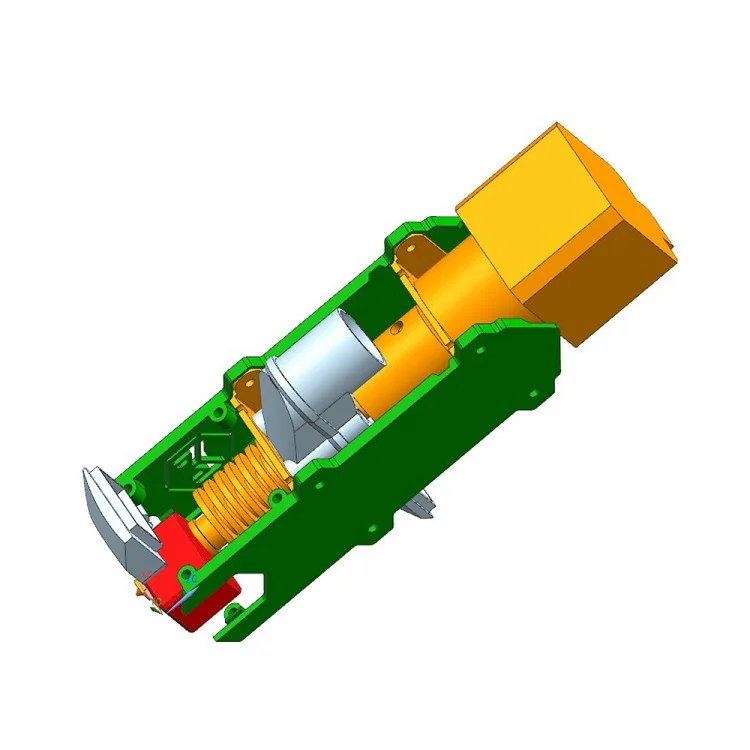 12.2022
12.2022
715
eighteen
Subscribe to the author
Subscribe
Don't want to
Please don't take this post too seriously - New Year, you can relax a bit :)&nbs...
Read more
eleven
Follow the author
Subscribe
Don't want
One day in July, under a similar heading, I wrote about how I managed to fix the fatal failure of the clock...
Read more
DrProg
Loading
03/24/2019
15831
81
Subscribe to the author
Subscribe
Don't want
- How so, sick? After all, I clearly advised you not to visit such establishments at least a couple .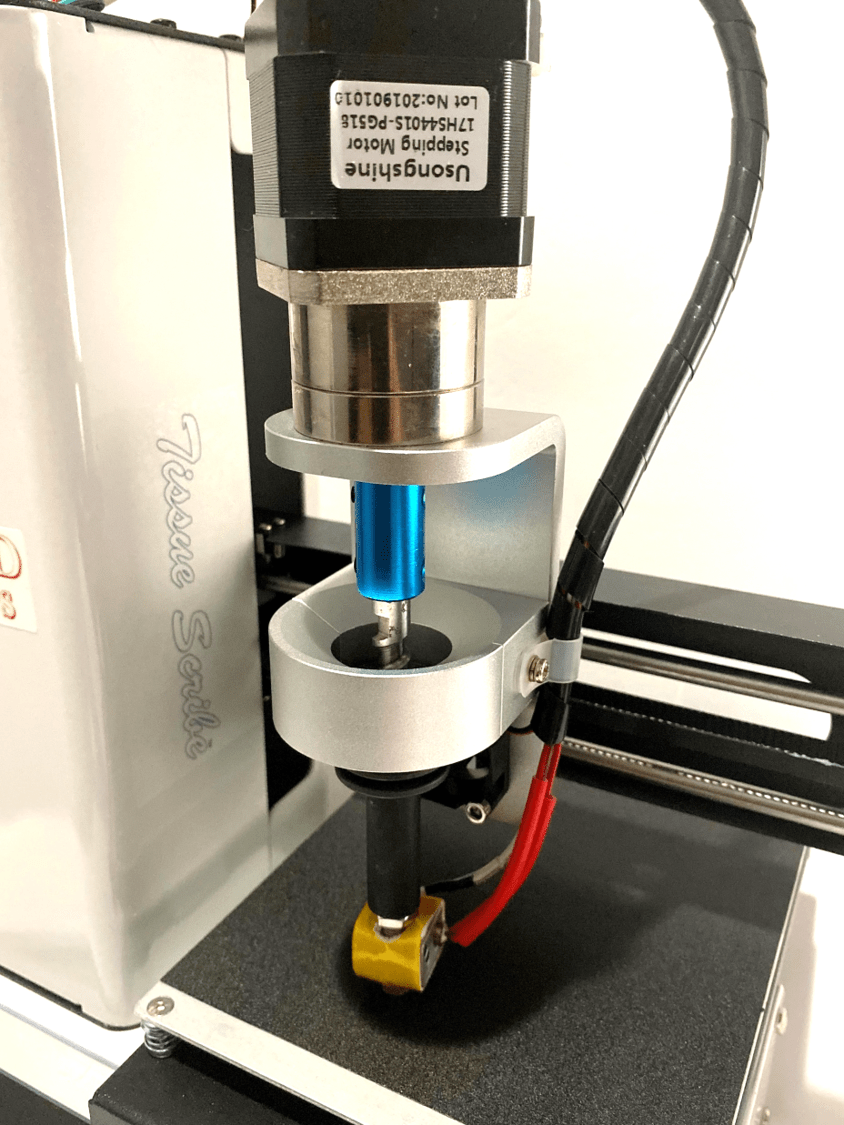 ..
..
Read more
Read blogs
How is 3D printing filament (material) made?
3DPrintStory News How is filament (material) made for 3D printing?
nine0006 Filament is a necessary part of the 3D printing process, if you draw an analogy, it is the "food source" for FDM 3D printing. As the industry develops, so does the variety of materials available. Nowadays, there are many brands, different sizes and a wide range of new types of materials for 3D printing. Have you ever wondered where these filament spools come from? The filament manufacturing process can be broken down into five steps, from raw material procurement to spool at your doorstep. In this article, we will take a detailed look at the process of making material for 3D printing.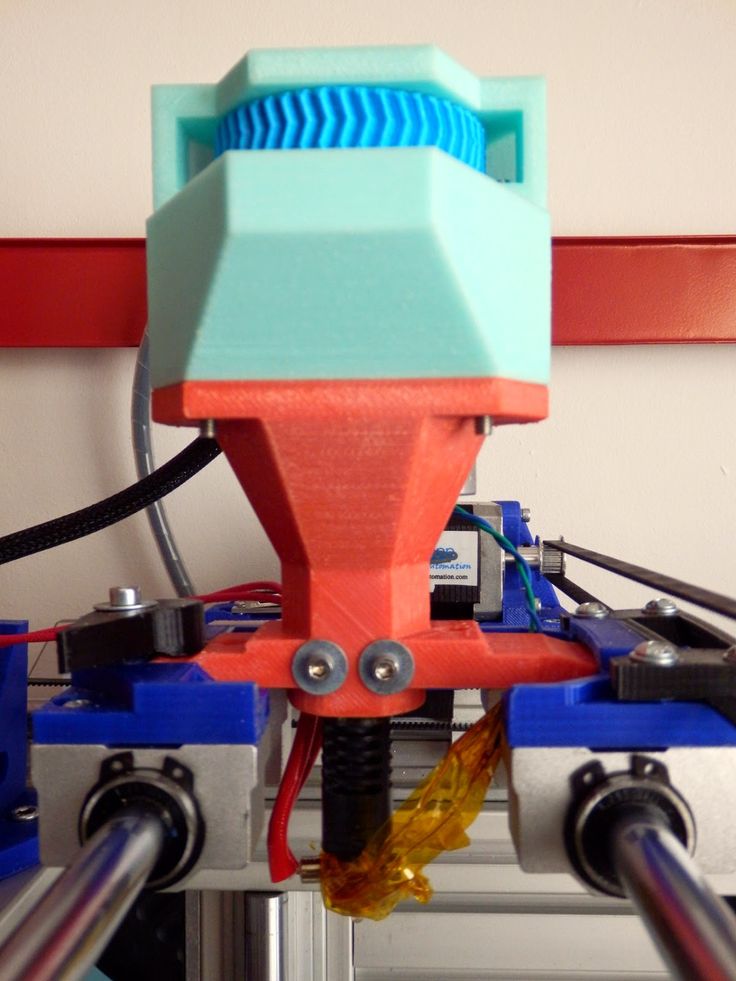 Given the variety of material types and the differences in how they are made, we will only focus on the basic steps that are common to all filaments. nine0003
Given the variety of material types and the differences in how they are made, we will only focus on the basic steps that are common to all filaments. nine0003
Step 1: Plastic
The first step in the filament production process is the production of plastic. During refining, crude oil is heated in an industrial furnace that separates its many different components. One of the components, naphtha (naphtha), is most used in the production of plastic for 3D printing.
Naphtha, catalysts and other chemical components are chemically bonded in the polymerization reactor. The polymerized naphtha products are then compounded and processed. This process involves melting the products and mixing them with other materials to form the plastic. The resulting plastic is then granulated into small pieces known as pellets or resin. nine0003
Plastic suppliers usually produce clear or white granules and resins. This allows their users, such as material manufacturers, to have more control over the dyeing process.
Compared to filament spools, pellets are very inexpensive: you can buy 1 kg of pellets for a fraction of the cost of 1 kg of finished filament. This, of course, is due to the fact that filament companies turn raw materials into finished products.
If you're up to the challenge, you can save some money by buying pellets directly from a plastic supplier and making your own 3D print material. There are even commercial products that make the filament manufacturing process easier. nine0003
Step 2: Preparation
In the second step of the process, the granules are prepared for the next step, molding, where they harden into a filamentous shape. The granules are placed in an industrial blender and mixed with additives to create a homogeneous mixture and give the material special properties.
Additives may include colorants or other elements that affect properties such as impact resistance, strength, structural integrity, and even magnetic properties.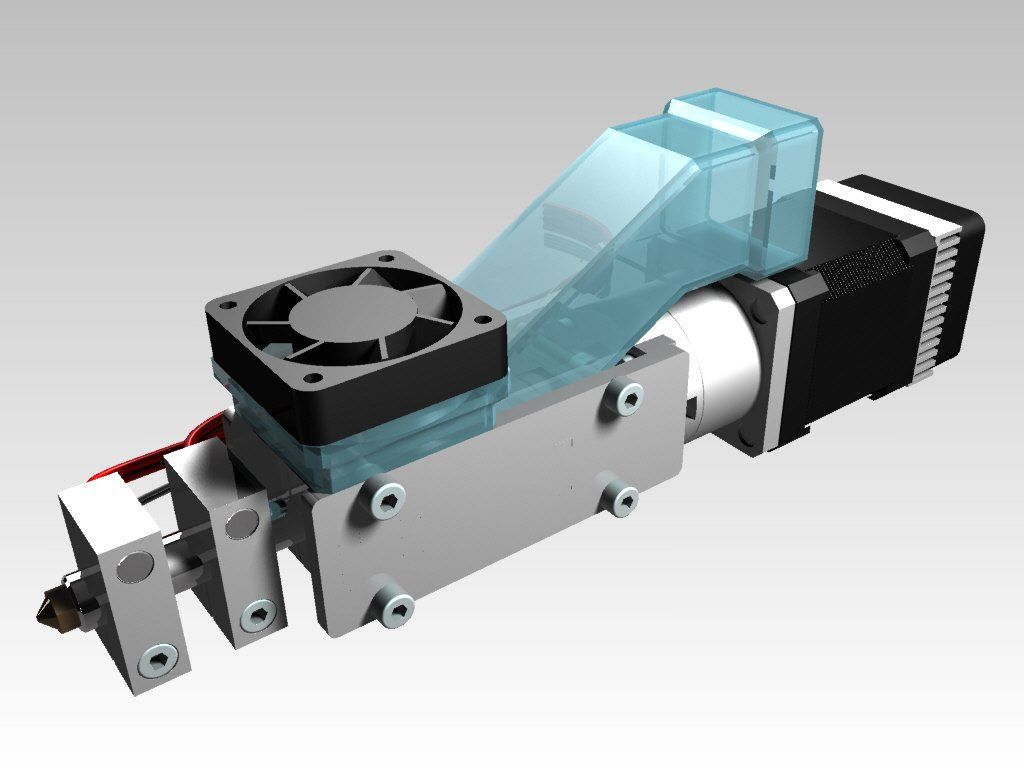 Exotic materials such as wood are produced by mixing special additives such as sawdust or wood particles with plastic granules. nine0003
Exotic materials such as wood are produced by mixing special additives such as sawdust or wood particles with plastic granules. nine0003
Drying
After the granules are properly mixed, they enter the drying phase. Like the filament, the granules are hygroscopic. This means that they absorb moisture from the air. This can deform or break the plastic, so removing moisture from the pellets is essential to ensure the production of quality filament. Drying usually takes place at 60°C to 80°C for several hours, but the process depends on the manufacturer.
Step 3 Shaping
The third step in the 3D printer filament production process is the string-shaping of the granules. This step includes the heating and cooling process. This is one of the most important and responsible steps.
Heating
In the first molding step, the pellets are fed into a material extruder which includes a heating chamber. In this chamber, the individual granules are melted into a sticky substance so that they can be easily shaped.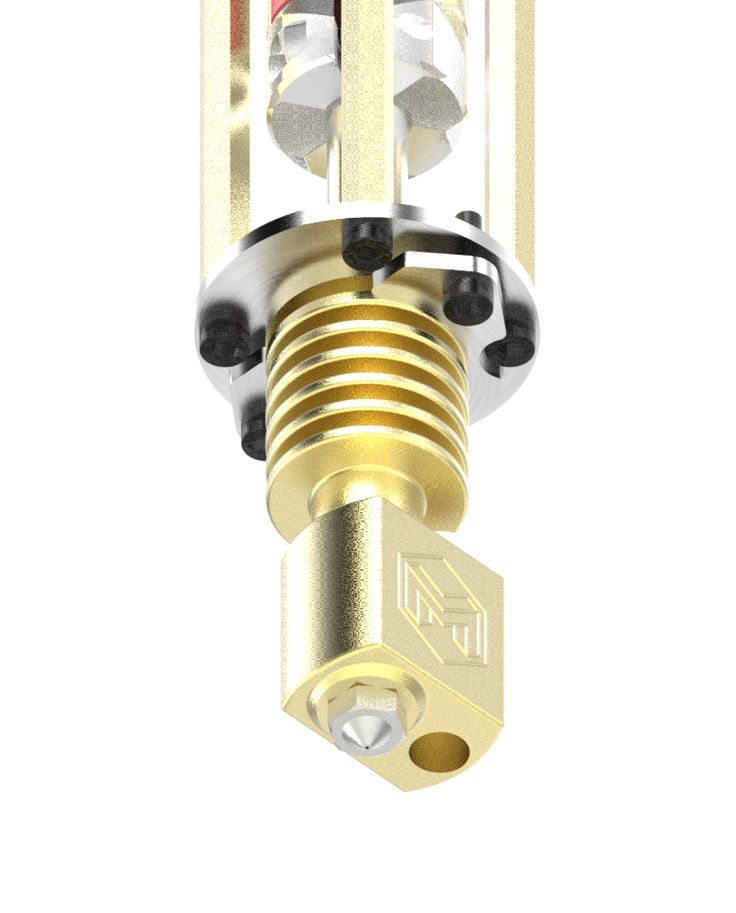
In this state, the granules are joined together and form a continuous twisted material. The bonded string material, better known as filament, leaves the heating chamber through a round nozzle and enters the cooling section. nine0003
Cooling
After the thread leaves the heating section, it passes through several water chambers. The first chamber is filled with warm water, which is an important factor in obtaining a rounded thread. Setting the right temperature for the material helps prevent oval-shaped filament from forming, which can cause problems for 3D printing.
The second chamber is filled with cool water, which cools the thread and reshapes it. The speed at which the thread is pulled determines the diameter of the thread. A lower speed produces a larger diameter, and a higher speed does the opposite. nine0003
Step 4 Winding
In this step of manufacturing the 3D printable material, the motors pull the filament from the cooling chamber to the winding mechanism.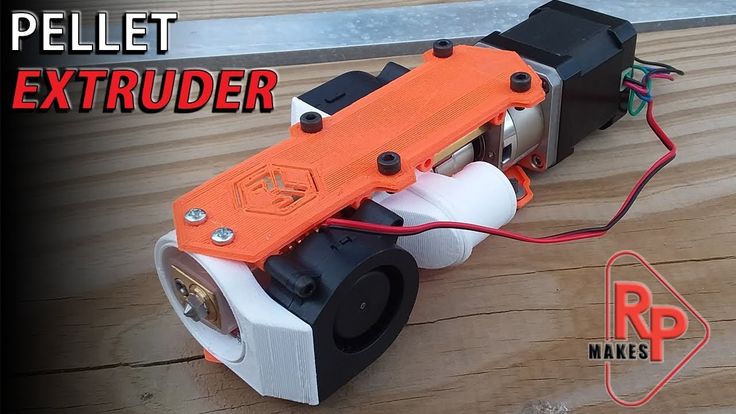 The winding process begins by measuring the filament diameter with a laser device to ensure that it is within the tolerance of the final required diameter, most likely 1.75 mm or 2.85 mm.
The winding process begins by measuring the filament diameter with a laser device to ensure that it is within the tolerance of the final required diameter, most likely 1.75 mm or 2.85 mm.
The thread is then attached to the spool and wound around it. As soon as the sensors detect that the spool is full, the thread is cut and secured. The process starts again, filling the next spool until a batch of filament runs out. nine0003
Step 5. Packing
The last step is the process of preparing the filament spools for sale. Vacuum packaging, boxes, barcodes, barcodes, all this is completed at this stage. Once the filament is properly packaged, it is ready to ship to customers. Reels that don't ship immediately are kept until someone like you orders them :).
This whole process happens over and over every day to fuel your 3D printer. As you can see, in order for the material you receive for 3D printing to be of high quality, you need a lot of effort and a well-established technical process.